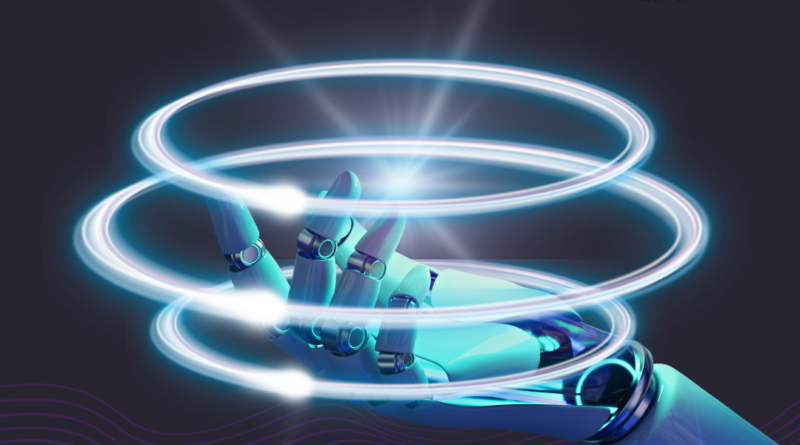What Is Artificial Intelligence & From Where Does It Get Started? Ias Banenge
Artificial Intelligence (AI) is a field of computer science that involves the creation of intelligent machines that can perform tasks that typically require human intelligence, such as learning, problem-solving, and decision-making.
The origins of AI can be traced back to the 1940s, when researchers such as Warren McCulloch and Walter Pitts began exploring the concept of artificial neural networks. In the 1950s, a group of researchers including John McCarthy, Marvin Minsky, and Claude Shannon founded the field of AI as we know it today.
However, it is difficult to attribute the invention of AI to any one person or group. The development of AI has been a collaborative effort involving researchers from various fields including computer science, mathematics, neuroscience, and psychology.
Over the years, there have been many breakthroughs and advances in AI, including the development of expert systems, natural language processing, and machine learning. Today, AI is used in a wide range of applications, from self-driving cars to virtual personal assistants to medical diagnosis and treatment.
AI, or Artificial Intelligence, refers to the capability of a computer or a machine to imitate intelligent human behavior. It involves the development of computer systems that can perform tasks that typically require human intelligence, such as visual perception, speech recognition, decision-making, and language translation.
Here are some frequently asked questions (FAQs) about AI that may be helpful for UPSC (Union Public Service Commission) exam preparation:
1) What is Artificial Intelligence (AI)?
Artificial Intelligence (AI) refers to the ability of a machine or computer program to perform tasks that typically require human intelligence, such as problem-solving, decision-making, learning, and recognizing patterns.
2) What are the different types of AI?
There are mainly two types of AI: Narrow AI (also known as Weak AI) and General AI (also known as Strong AI). Narrow AI is designed to perform specific tasks, such as voice assistants like Siri or Alexa. General AI, on the other hand, is capable of understanding and performing any intellectual task that a human can do.
3) What are some real-world applications of AI?
AI is being used in various fields, including healthcare, finance, transportation, education, agriculture, and entertainment. Some examples of AI applications include virtual personal assistants, recommendation systems, self-driving cars, fraud detection systems, and medical diagnosis.
4) What are the ethical concerns related to AI?
As AI becomes more prevalent, there are concerns about ethical issues such as bias, fairness, accountability, transparency, and privacy. There are also concerns about the impact of AI on employment, security, and human decision-making.
5) What are the challenges in the development and deployment of AI?
There are several challenges in the development and deployment of AI, including technical challenges such as data quality and quantity, algorithm accuracy, and computing power. There are also social, economic, and legal challenges, such as regulation, standardization, and ethical considerations.
6) What is Machine Learning?
Machine Learning is a subset of AI that involves the use of algorithms and statistical models to enable computers to learn from and make predictions or decisions based on data without being explicitly programmed. It is a key technology used in many AI applications.
7) What are the key components of an AI system?
An AI system typically consists of data, algorithms, and computational power. Data is used to train the algorithms, which are the mathematical models that enable the system to perform tasks. Computational power refers to the processing capabilities of the system, which are required for training and inference.
8) What is Deep Learning?
Deep Learning is a subset of Machine Learning that involves the use of artificial neural networks, which are inspired by the structure and function of the human brain, to perform complex tasks such as image and speech recognition. Deep Learning has been instrumental in many recent breakthroughs in AI.
9) How is AI being used in the public sector?
AI is being increasingly used in the public sector for various purposes, such as improving public services, enhancing policy-making, and optimizing resource allocation. Some examples of AI applications in the public sector include smart city solutions, predictive policing, and healthcare management.
10) What are the future prospects of AI?
The field of AI is rapidly evolving, and its future prospects are vast. It is expected to have a significant impact on various aspects of society and the economy, including healthcare, transportation, education, and employment. However, there are also concerns about the ethical, social, and economic implications of AI that need to be addressed in the coming years.
These are some frequently asked questions about AI that may be relevant for UPSC exam preparation. It’s important to keep up-to-date with the latest developments in the field of AI and have a comprehensive understanding of its concepts, applications, and implications for various sectors of society.
READ MORE – Recognising NABARD’s Preeminent Function | Ias Banenge
Benefits of ChatGPT:
As a language model developed by OpenAI, ChatGPT offers a wide range of benefits across various domains and use cases. Here are some of the key benefits of using ChatGPT:
- Efficient Communication: ChatGPT enables efficient communication by providing real-time responses to user queries, eliminating the need for lengthy delays in obtaining information or assistance.
- Versatility: ChatGPT can be used across different domains and industries, including customer service, content generation, language translation, virtual assistants, and more. It can be easily tailored to suit specific use cases and requirements.
- Cost-effective: Compared to human customer service representatives, ChatGPT can provide cost-effective solutions as it can handle multiple queries simultaneously without requiring additional resources.
- Scalability: ChatGPT is highly scalable, making it suitable for handling high volumes of queries or requests with consistent performance, making it suitable for businesses of all sizes.
- 24/7 Availability: ChatGPT can operate round-the-clock, providing support or information to users at any time, without being constrained by time zones or working hours.
- Consistency: ChatGPT provides consistent responses based on its training data, ensuring uniformity and accuracy in information or assistance provided to users.
- Language Support: ChatGPT can understand and generate text in multiple languages, making it accessible to users globally and enabling multilingual interactions.
- Training and Customization: ChatGPT can be trained and fine-tuned on specific datasets, allowing customization to meet specific requirements and provide tailored responses.
- Privacy and Security: ChatGPT respects user privacy and confidentiality, as it does not store or retain any user data, making it a secure option for communication and interactions.
- User Engagement: ChatGPT can enhance user engagement by providing interactive and conversational experiences, resulting in improved user satisfaction and retention.
Overall, ChatGPT offers a wide range of benefits, including efficient communication, versatility, cost-effectiveness, scalability, availability, consistency, language support, training and customization, privacy and security, and user engagement, making it a valuable tool for various applications and industries.





Pingback: In the Long Run Waste water May Be Useful - Ias Banenge